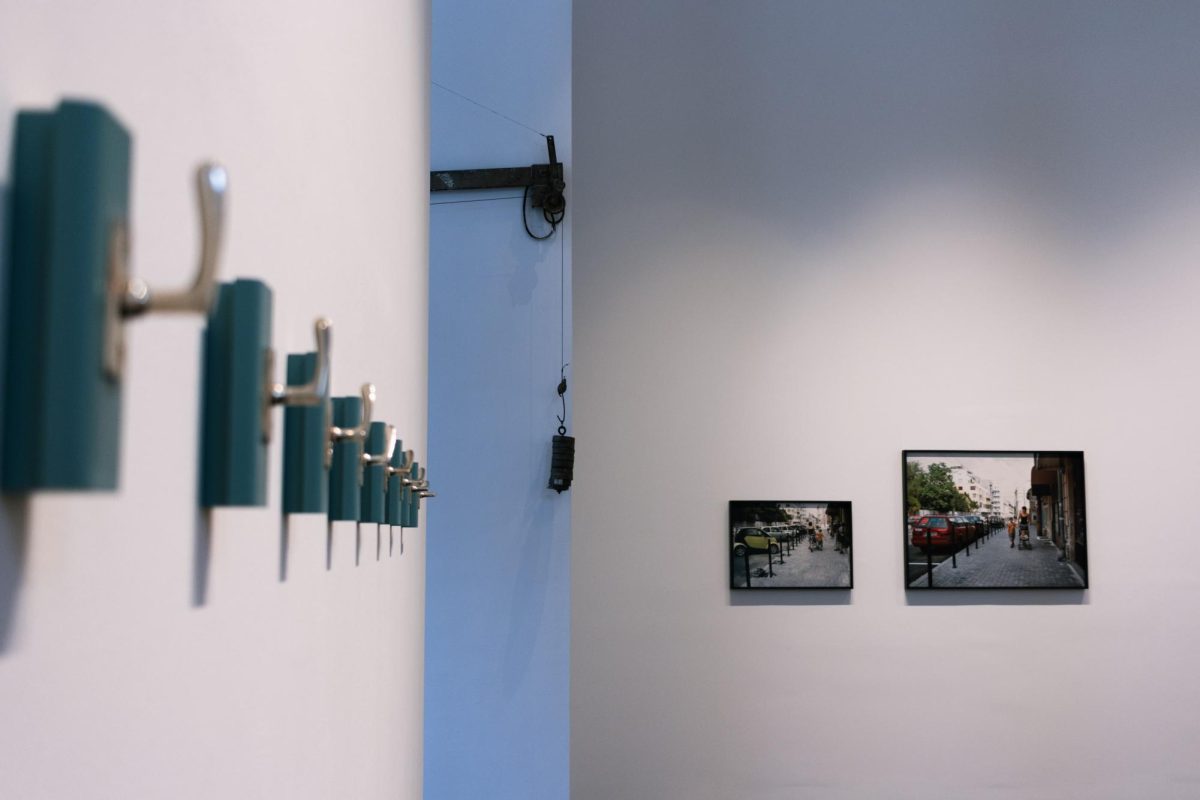“Waiting For Someone to Ring at My Door” is the latest exhibition of Slovakian multimedia artist Roman Ondak’s work, surveying his career from shortly after the fall of the Soviet Union to the present. Both Ondak’s mastery of composition, deconstruction and storytelling, and his assertion that art can help us through the most trying of political crises make for a remarkable exhibition.
The gallery evokes both a cathedral and an old Soviet-style apartment: Your eyes are drawn heavenward, not to some stained glass window or gilt saint, but instead to a plain doorbell, the exhibit’s titular work. Ondak salvaged the bell from the trash of his childhood apartment building in Žilna, Slovakia, then called the Czechoslovak Socialist Republic under the influence of the USSR.
Walking around the gallery, you are faced with a second contradiction: Everything is both intimate and distant. You sit in what feels like a family’s living room — there are pictures of children, sculptures, windows and a set of the artist’s son’s keys sitting in a lock. The works “Elements II” and “Untitled (60),” composed of used teabags, imply that at some point in time and space, people gathered, drank tea, talked and felt joy.
The viewer is made to wonder why these confusing puzzles, painted in brilliant, enticing colors, were left unsolved in a space where people clearly gathered and played games and relaxed.
However, there is a coldness.
Woven into this intimacy are four unfinished crossword puzzles: “Unsolved Crossword,” “Squaring the Circle,” “Vanishing” and “Labyrinth.” The viewer is made to wonder why these confusing puzzles, painted in brilliant, enticing colors, were left unsolved in a space where people clearly gathered and played games and relaxed. What was left unspoken?
Ondak’s living room is an “unspace” — both lived in and empty. Such is the result of political repression, as explained by Ondak’s art: No matter how intimate your surroundings, something remains unsaid, unreal and unsolved because it is impossible to speak the truth with the government’s boot on your neck.
Ondak’s childhood was marked with oppression. He grew up in a country where every work of art, no matter how large or small, was propaganda, funded and shown expressly for the glorification of the state. Halfway through his time at the Academy of Fine Arts in Bratislava, however, the Berlin Wall fell and shortly after, so did the system that left the vivid crosswords unsolved. Liberated from artistic restraints, Ondak could share his experiences and paint the solemn reminders of what he was never allowed to express at the time.
Ondak’s work is an iconic fixture in the world of contemporary art; his art has been shown in prestigious museums such as the Museum of Modern Art here in New York, the Tate Modern in London and the Slovak National Gallery.
Walking to the very back of the second room, you encounter two twin photos of men — the artist, looking triumphant, and his father, looking concerned. Both are reading the same paper: A 1968 edition of a local Slovakian publication, with the headline announcing the literal crushing of the Prague Spring independence movement under tank treads. This set of photos, titled “Bad News is a Thing of the Past,” is Ondak’s thesis: No matter how hopeless, unsolvable or distant the world feels, there is still intimacy, hope, a vividly-colored horizon to triumphantly gaze upon.
Ondak’s work is an iconic fixture in the world of contemporary art; his art has been shown in prestigious museums such as the Museum of Modern Art here in New York, the Tate Modern in London and the Slovak National Gallery. The current exhibit at the Peter Freeman Gallery is a unique chance to see some of Ondak’s most famous works entirely for free.
“Waiting For Someone to Ring at My Door” is showing at the Peter Freeman Gallery until Oct. 25. The gallery is located in SoHo and is open from 10 a.m. until 6 p.m., Tuesday to Saturday. Next time you have a free 30 minutes between popups or boutique trips, be sure to stop by to experience something beautiful, profound and deeply relevant.

